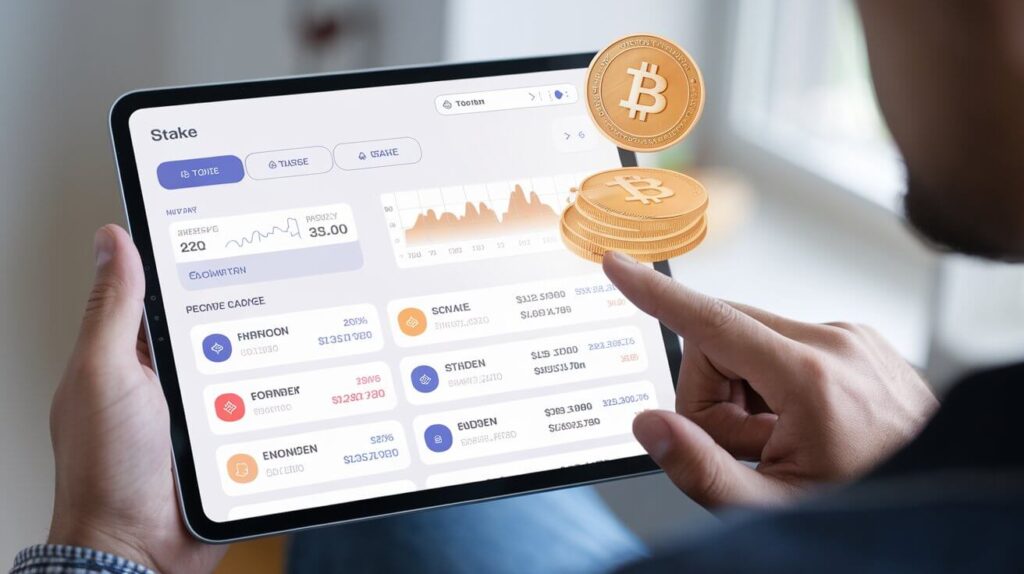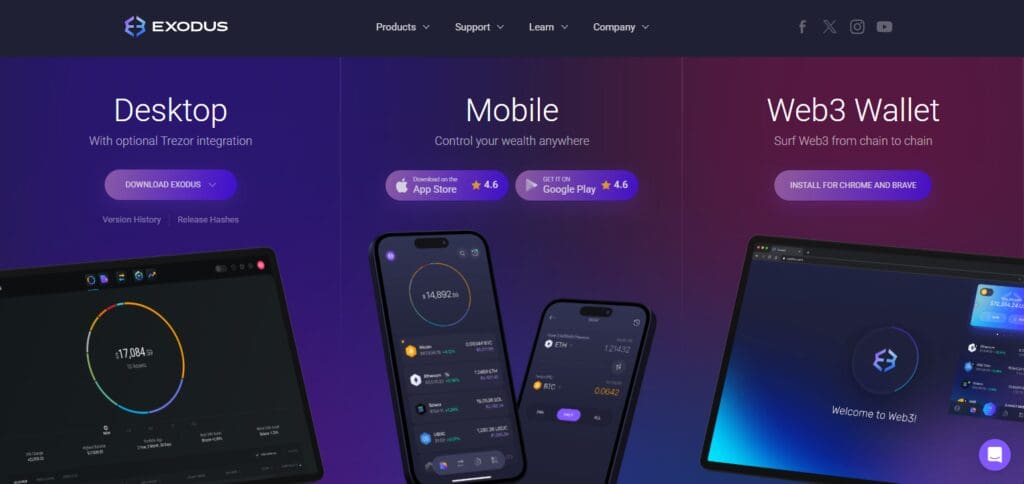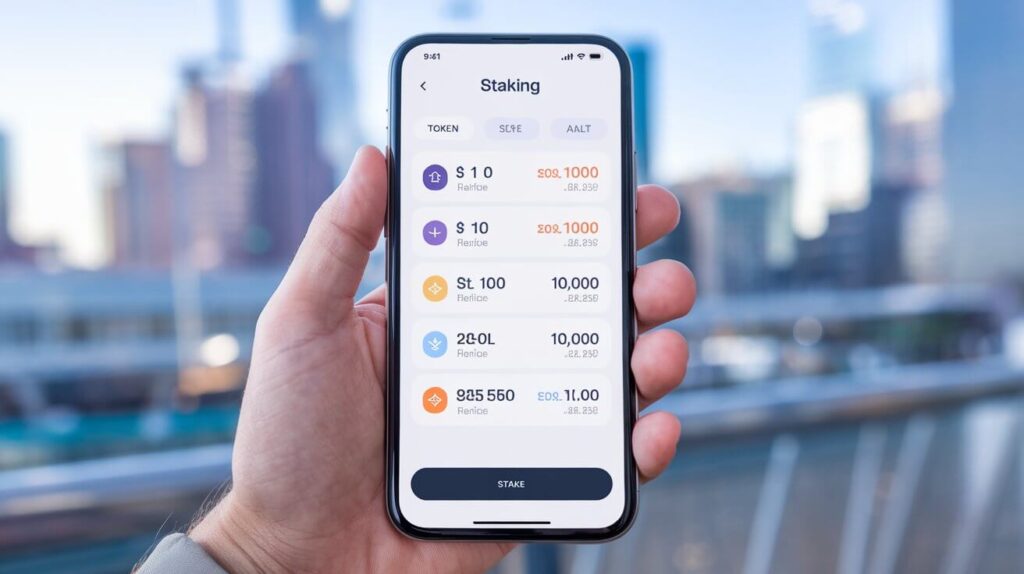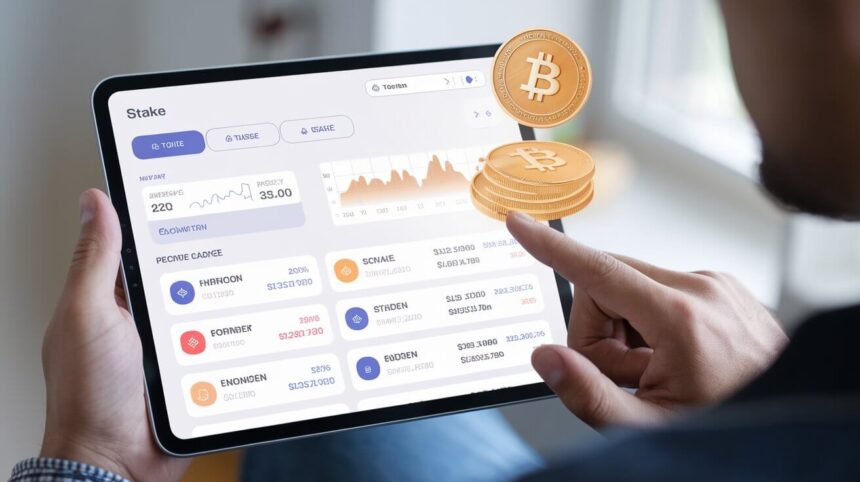In this article , i will discuss the How to Stake Tokens on Exodus Wallet, and I will walk you through the entire process.
By staking, you are able to earn passive income while also helping others validate transactions on a blockchain network.
I will make sure to help you every step of the way from choosing the right tokens to handling your rewards so that you can safely and efficiently stake your assets through the Exodus Wallet.
What is Staking Tokens?
Staking tokens refers to the locking up of cryptocurrency holdings in support of a blockchain network’s operations like transaction validation. Staking usually nets stakers rewards in the form of extra tokens.

This is a main aspect of Proof-of-Stake (PoS) and Delegated Proof-of-Stake (DPoS) systems which provides a means of passive income for crypto investors. Staking also further secures the network by incentivizing participants to act in an honest manner due to having a financial stake within the system.
How to Stake Tokens on Exodus Wallet

Step-by-Step Guide:
Downloading and Installing Exodus Wallet:
Go to the Exodus website and select the relevant wallet version for your device, be it desktop or mobile.

Afterwards, install the wallet and set it up by creating a new password.
Depositing Tokens:
From your wallet, select the token you wish to stake. You could choose Algorand, Cardano or even Tezos.
To deposit tokens from an exchange or a different wallet, first click on “Receive” to access your wallet address.
Accessing The Rewards Section:
From the interface of the wallet, go to the “Rewards” section.
From there, select the token you wish to stake.
Monitoring Rewards:
Navigate to the “Rewards” section to view details pertaining to your staking activities as well as earnings.
Reward Configuration:
After picking the relevant blockchain, proceed to the staking section.
In this section, you can review the staking parameters like lockup time and rewards. Proceed to set the parameters as you wish.
Stake parameters can be set per chain and can include primary network fee payment strategies and reward mode selection such as primary mode-only.
Best Stake Tokens on Exodus Wallet
Solana (SOL)
Solana (SOL) in Exodus Wallet provides an effortless way to earn rewards while also helping to maintain and optimize the network.

With Exodus, you do not need third-party applications because you can stake SOL in the wallet itself. You don’t have to wait until the end of the staking cycle to see the profits, as Exodus provides immediate reward tracking.
This makes Exodus a great option for SOL holders who prefer simple and safe wallet management solutions.
Cardano (ADA)
Cardano (ADA) on the Exodus Wallet is an easy way to earn rewards while simultaneously helping with the network’s decentralization.

Exodus provides users with a one-click delegation option that makes staking ADA effortless due to its simplistic nature.
User rewards are deposited directly into the wallet without any claiming process, meaning you won’t need to do anything to get your rewards and won’t need to do any manual claiming. Such unique qualities make Exodus a remarkably simple and productive platform for users wanting to passively earn ADA.
Cosmos (ATOM)
Cosmos (ATOM) in Exodus Wallet, you help secure the network and earn rewards in the process.
Exodus makes it so simple to stake that even a beginner would know how to do it. Its interface is clean and easy to understand.

With Exodus, even reward estimation is built-in. This means that you can see how much you would earn before you stake your ATOM reward.
Exodus provides a transparent ecosystem, so ATOM holders who are looking for a simple and informed staking experience can stake with confidence.
Risks and Considerations

Lockup Period
Access to your staked tokens is restricted for a certain period of time.
Slashing Risks
Losing staked tokens if a validator behaves poorly and get’s slashed.
Network Fees
Reduction in returns as there may be fees associated with staking and unstaking.
Wallet Security
Loss of staked tokens is possible if Exodus wallet is hacked.
Rewards Fluctuation
The network’s state impacts staking rewards, and they are not assured.
Features
Wallet Interface is Intuitive
Navigation on the app is seamless so even a novice can use it.
Staking Supports Multiple Assets
Stake a variety of coins like SOL, ADA, and even ATOM.
Reward Tracking is Instant
Rewards from staking can be tracked at any time.
Staking in One Click
Technical delegation is not complicated, it is straightforward.
Portfolio Tracker is In Built
View all your tokens and their stake status with ease.
No External Platforms Needed
Stake from the wallet directly without the need for a third party.
Receive Rewards Automatically
Staking rewards are sent straight into your wallet.
Pros & Cons
Pros and Cons of Staking Tokens on Exodus Wallet
| Pros | Cons |
|---|---|
| User-Friendly Interface: Easy-to-use platform, ideal for beginners. | Lockup Period: Staked tokens may be inaccessible for a set period. |
| Earn Passive Income: Receive regular staking rewards. | Slashing Risk: Validators’ misbehavior can lead to token loss. |
| Multiple Assets Supported: Stake various cryptocurrencies in one wallet. | Network Fees: Staking and unstaking may involve transaction fees. |
| No Third-Party Platforms: Stake directly from the wallet without external services. | Rewards Fluctuation: Staking yields vary based on network conditions. |
| Built-In Portfolio Tracker: Easily monitor staked tokens and rewards. | Security Risks: Wallet compromise could put staked assets at risk. |
Conclusion
To sum up, staking tokens on Exodus Wallet is an easy and efficient method of generating passive income while contributing to blockchain networks.
By following my instructions, you should be able to stake your assets and reap the rewards effortlessly. Still, take the time to understand the risks associated with slashing and lockup periods.
For optimal security ensuring maximum protection, update your wallet frequently, back it up using your seed phrase, and add only trusted validators when staking.










